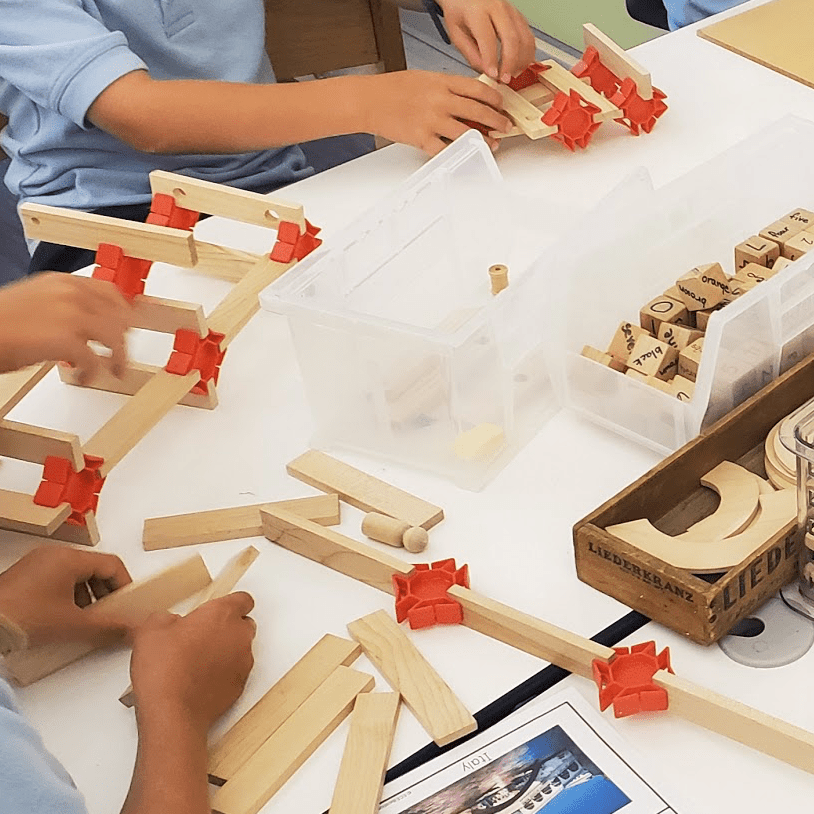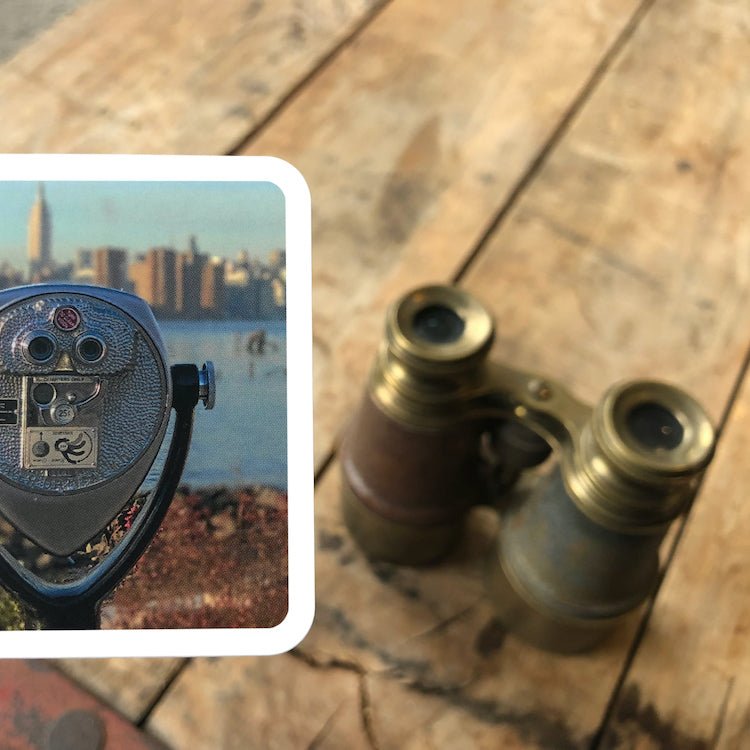Jocelyn Paez is an educator at The Lovett School in Atlanta. She is enthusiastic, creative and insightful, and we at OuiSi knew from the get-go that we wanted her to write for our blog. Below is the first of many posts about her adventures with OuiSi and, more broadly, the evolution of what it means to receive a childhood education. You can find Jocelyn's portfolio here.

How I Approach Education
I'm an Academic Technology Specialist at a K-5 school, which means I'm always exploring new methods to engage my students. I aim to provide them with the tools they need to discover and learn, without restricting them with excessive instruction. My shelves are FULL of materials and loose parts I use to intrigue and nudge the curious minds in my classrooms.
My work as an educator is a dance of science and art, and I spend a lot of time exploring in both directions. An early education learning philosophy I find appealing is the Reggio Emilia approach; that is, children learn best when pursuing their own interests while constantly exploring their safe, supportive, and stimulating environments.

Creating authentic and student-driven learning opportunities is what I truly care about providing. Through those engaging experiences I am able to help my students find the interconnectedness of the world. For this reason, I also appreciate the Systems Thinking model, which encourages us to look at all the elements that relationally comprise systems within systems.
Finding OuiSi
You will often find me navigating Reggio-inspired teaching blogs and Pinterest boards (one of my favorites to follow is Fairy Dust Teaching). While tumbling down a Pinterest rabbit-hole this summer, I came across a blog post about OuiSi. On their site I read about the game-makers (Paul and Kaz) and how OuiSi came to life via Kickstarter. I had to try OuiSi out. The design process of two unique strangers collaborating on a connection-based tool in addition to the game itself, had me intrigued.

When the game arrived, I was so overjoyed that I decided to reach out to Paul. I found contact information on the website and sent him an email about the open-ended, unstructured, and creative play options OuiSi provides. Not only for teachers, but for anyone with young people in their lives, or for those who appreciate a daily dose of creativity. A week later we were on the phone, discussing our childhoods, learning experiences, and the serendipity of connecting in all its forms.
Suffice to say, I was excited about OuiSi. I had found a new visual tool to help younger students make connections; indeed, to observe the interconnectedness of the world.
Classroom Exercises
OuiSi has become a go-to in my classroom. Recently I asked my second-graders to take an individual stack of ten OuiSi cards and follow the "OuiSinoes" guidelines. OuiSinoes is kind of like dominoes, but instead of connecting numbers, you're making visual connections.

Connect With Us
Without taking the risk to connect, my new partnership with Kaz and Paul wouldn’t exist. When we pause, observe, and look for the similarities in the world, we come to find meaningful connections all around us. This is what I aim to teach in my classes. And, that's what I want to explore as I begin to write with the OuiSi team. I’ve discovered, OuiSi isn't about the cards, it's about what happens between them - making YOU the most important ingredient. See for yourself.
I have a bunch of ideas I can't wait to share! We would love to hear from you. If you haven't already signed up for the OuiSi newsletter, you'll find a spot to do so at the bottom of this page. During these times of isolation, it is important now more than ever before, that we find and create meaningful ways to connect.
Stay connected,
Jocelyn Paez



4 comments
Molly Huddleston
I have a friend who’s a guidance counselor in a rural school and think she would love this game for her kids. How can I get info about it when she’s not on Facebook?
Thanks,
Molly Huddleston @
mollyb@pacific.net
I have a friend who’s a guidance counselor in a rural school and think she would love this game for her kids. How can I get info about it when she’s not on Facebook?
Thanks,
Molly Huddleston @
mollyb@pacific.net
kate Streng
Enjoying a great product in OUISI Love knowing all the ways to use the game in more and more ways!
Enjoying a great product in OUISI Love knowing all the ways to use the game in more and more ways!
Jocelyn Paez
Hi Essie! Thanks for your note! I think OuiSi would be great for your students. There are so many options with game play whether creative or competitive. In addition, the open-ended nature of the game allows for people to create their own ways to play.
Using the picture cards to evoke and discuss feelings is good “brain stretching” activity. I describe it in a little more detail in the Morning Meeting blog post.
The cards are sturdy and just to be extra safe, I laminated each of them. This makes it super easy to sanitize and wipe down after each use. I also like to bundle the cards with a binder clip or rubber band in groups of 10 creating 21 easy to distribute groups of cards.
Let me know how it goes!
Hi Essie! Thanks for your note! I think OuiSi would be great for your students. There are so many options with game play whether creative or competitive. In addition, the open-ended nature of the game allows for people to create their own ways to play.
Using the picture cards to evoke and discuss feelings is good “brain stretching” activity. I describe it in a little more detail in the Morning Meeting blog post.
The cards are sturdy and just to be extra safe, I laminated each of them. This makes it super easy to sanitize and wipe down after each use. I also like to bundle the cards with a binder clip or rubber band in groups of 10 creating 21 easy to distribute groups of cards.
Let me know how it goes!
Essie
Hi! I teach a class for high schoolers with significant disabilities, and I’m always looking for fun activities that are “brain stretching” without necessarily being dependent on traditional academic skills. This seems like it would be appropriate!
How would you use this game during the pandemic? Are the pieces sturdy enough to be sanitized? Is there a way you could imagine using this via video conference?
Hi! I teach a class for high schoolers with significant disabilities, and I’m always looking for fun activities that are “brain stretching” without necessarily being dependent on traditional academic skills. This seems like it would be appropriate!
How would you use this game during the pandemic? Are the pieces sturdy enough to be sanitized? Is there a way you could imagine using this via video conference?